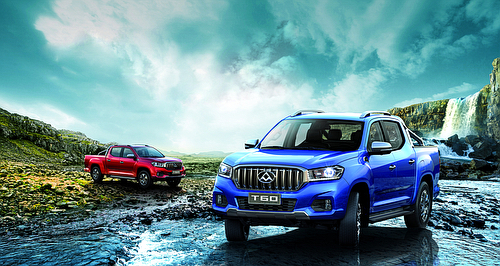Gallery

Click to see larger images
THIS has been a welcome buoyant year for dealers and OEMs but like rainwater filling potholes on the road, the car market’s smooth surface hides a few dents in the fortunes of some car-makers.
Australia’s new-car market is up 26.6 per cent to the end of September this year, with the passenger car, SUV and light commercial vehicle (LCV) segments accounting for 784,323 sales to date which is up 21 per cent on the same time in 2020 while the heavy commercial sector is up 28.5 per cent with 31,817 sales.
The increase comes on high customer demand for new – and used – vehicles but is dented by tight supply that is affected by production issues (including semiconductor shortages and ongoing pandemic-related labour problems), shipping constraints and restrictions in new-car showroom access.
While the overall market is up, there are some losers. Gaps in the market when Holden ended production and sales from late 2017 have been filled mainly by growing numbers of products from China.
The three main Chinese brands operating in the car, SUV and LCV sectors are GWM (including Haval), LDV and MG.
Together, their sales in the first nine months of 2021 accounted for 52,977 units, or a combined 6.8 per cent share across the three segments they compete in.
In comparison, in the same period in 2020 these OEMs recorded only 18,644 sales, or a 3.0 per cent share.
Sales of GWM/Havel, LDV and MG vehicles rose by 64.8 per cent (34,333 units) while the overall market lifted 21 per cent in the same period.
The ‘hole’ left in the market to allow the growth of the Chinese brands is partially attributed to the exit of Holden sales three years before, but also a movement away from some other brands.
Notably, Honda has made two strategic moves to introduce an agency model for its sales and integral with that, a deliberate decision to reduce annual sales to around 20,000 units a year, less than half its 43,000 annual sales of 2019.
Because of the reduction in available Honda vehicles, sales are down 38.5 per cent to the end of September.
There have also been some model withdrawals in the past year. Ford pulled its EcoSport, Endura and Mondeo while Honda has stopped its Civic sedan, City and Jazz; Hyundai no longer sells its Elantra and Accent; Jeep won’t import its small SUV Renegade and Kia has dumped its Optima.
Infiniti, Morgan and Caterham brands have gone, and Renault has discontinued its Clio, Kadjar and Zoe for Australia. Alfa Romeo has stopped selling its 4C and Giulietta; Citroen has discontinued the C3 Aircross and C4 Cactus; Fiat ceased its 500X, 124 Spider and Doblo.
You can’t buy a new V60 and V90 from Volvo, SsangYong has ended importing its Tivoli and Chrysler is running out its 300 sedan. Subaru has stopped its BRZ and Levorg until replacements arrive and Toyota likewise is awaiting the second-generation 86. Its Prius C has been dropped.
Into several of these these holes are increased attention in the Chinese brands.
Individually, LDV has recorded a 100 per cent sales increase on the same nine months of 2020, its major model players being the T60 ute that is up 59.2 per cent with 5187 sales to date; the G10 van that found 720 buyers for a 41.5 per cent sales lift; and its new Deliver 9 van and bus that are new this year but have 1413 sales already.
MG’s biggest winners are the ZS SUV and MG3 hatch – although the HS SUV is also a very strong seller – which have boosted the brand’s sales to date by 199.9 per cent or 28,878 units.
GWM/Haval is up 270.1 per cent for the nine months compared with the same period in 2020. Its best sellers are the new GWM 4x4 Ute (5158 sales) and Jolion SUV (2330 sales), while its Haval H6 is up 273.9 per cent after finding 2217 buyers.


















Facebook Twitter Instagram